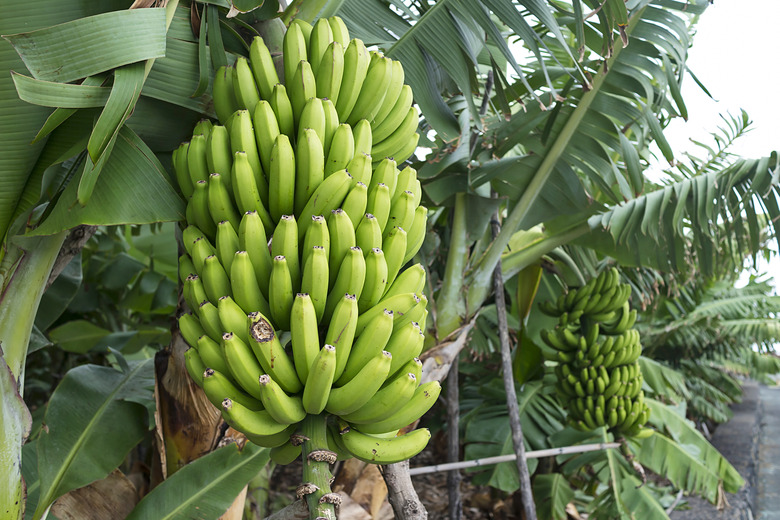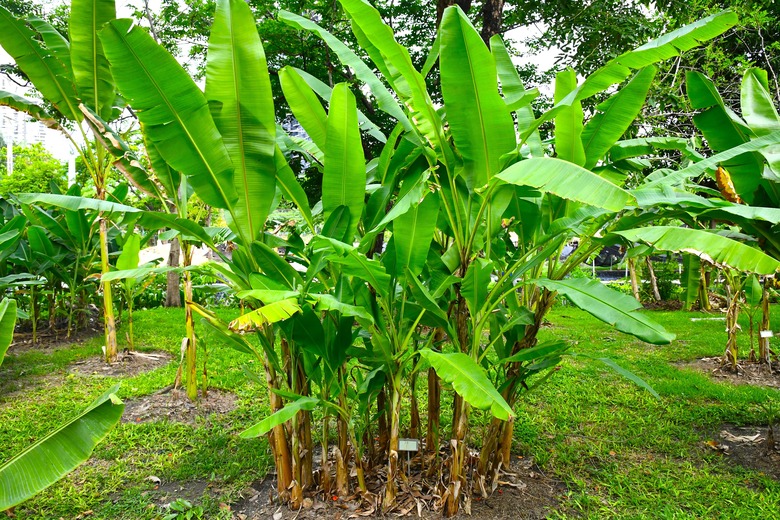Is A Banana Plant An Herb, Shrub Or Tree?
You've probably heard the term "banana tree" if the plant that produces bananas (Musa spp.) is discussed. You most certainly would not hear, "Did you see that banana herb growing over there?"
The Banana Is an Herb
But, yes: **The banana is an herb; it's not a tree or a shrub.** It's an herb with a thick, juicy trunk that can reach a height of 50 feet, although most varieties range from 10 to 40 feet, depending on the cultivar.
Does a Banana Grow on a Tree?
Nope. That beloved fruit ubiquitous in every U.S. lunchbox grows on an enormous stem of the largest herb in the world. The stem, which is full of water and very fleshy, is composed of tightly packed leaves.
You can see this if you could watch the stem unfurl at the top to see its leaves, sometimes called "cigar leaves" before they fully open to produce its giant, voluptuous, leafy crown. These leaves do the massive work of photosynthesis for this very large plant.
Can You Plant Banana From Seed?
Growers do not use a banana's seeds to propagate bananas. The seeds are no longer produced in the varieties cultivated for most uses, although varieties of wild bananas (Musa balbisiana) do have seeds.
The best and easiest way to propagate a new banana plant is to let nature do it for you: Use the suckers the plant produces at its base. These will be clones of the mother plant and have all its characteristics.
Usually, you will see a stand of bananas, rather than a single banana plant. These are the suckers produced that have been allowed to grow to full size. Once one plant has flowered and the banana stalk has been harvested, that plant dies back—at which point you can cut it down to the ground, making more room for the other suckers to reach maturity.
About the Banana Fruit
While the banana plant is actually an herb, its fruit is really a berry, and it shares traits with cucumbers, pumpkins and avocados, which are also berries—while strawberries and raspberries are not berries at all. Crazy, I know!
The reason botanists define some fruits as berries is quite technical, and even they often agree that the definition could be clarified and improved. However, a berry must have two or more seeds and must develop from a single flower developed from a single ovary.
In any case, the fruit, or berry, develops from the banana's flowering stalk. As it matures, it develops into clusters of fruits composed of tiers, called "hands," each of which may have 20 fruits each. There may be 3 to 20 tiers on a single bunch, which can result in a huge, hanging structure that can weigh from 65 to more than 100 pounds.
What you buy at the grocery store is a portion of a hand, which harvesters have broken or cut off the bunch to become a manageable size to take home to have a few bananas to ripen on the counter.

